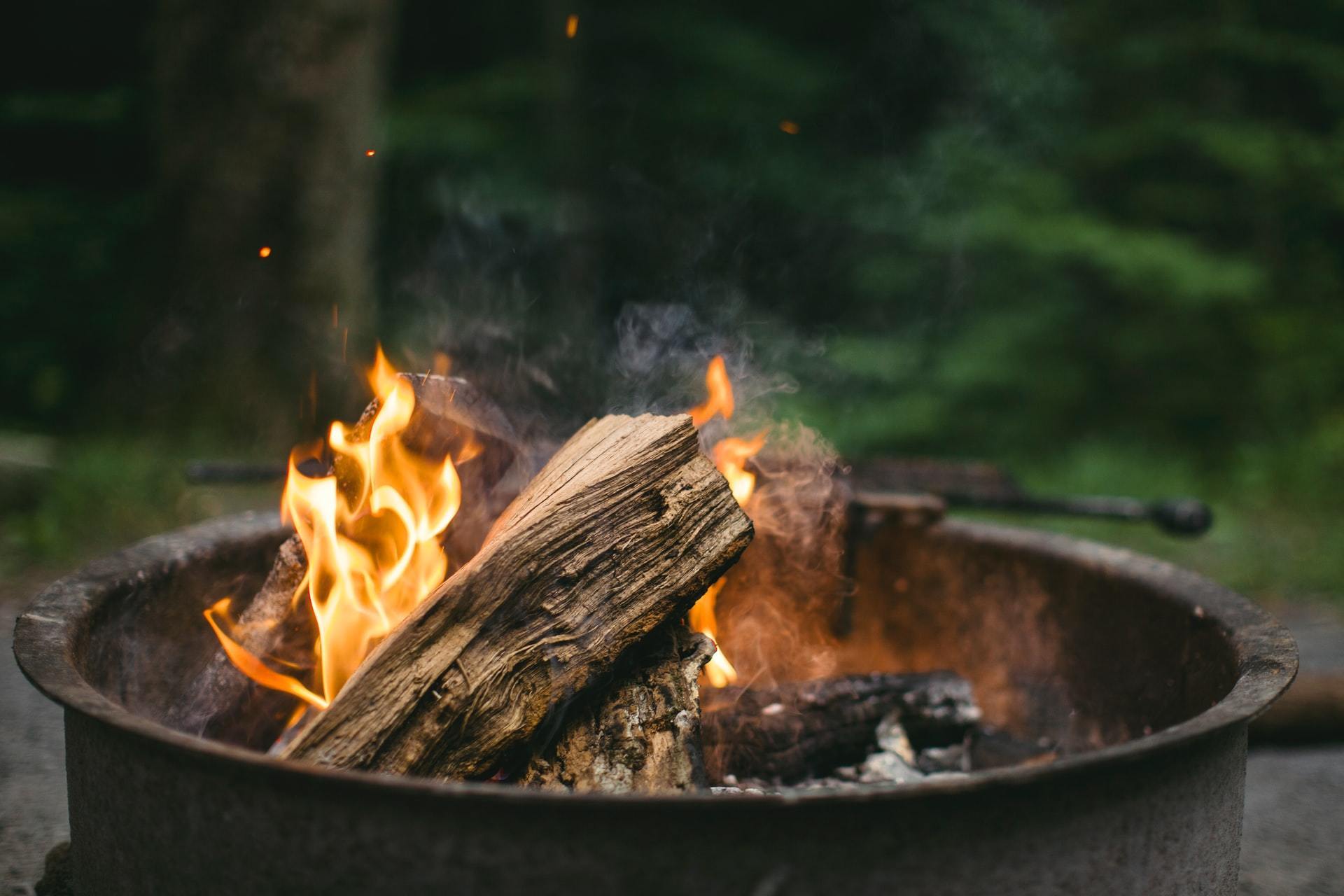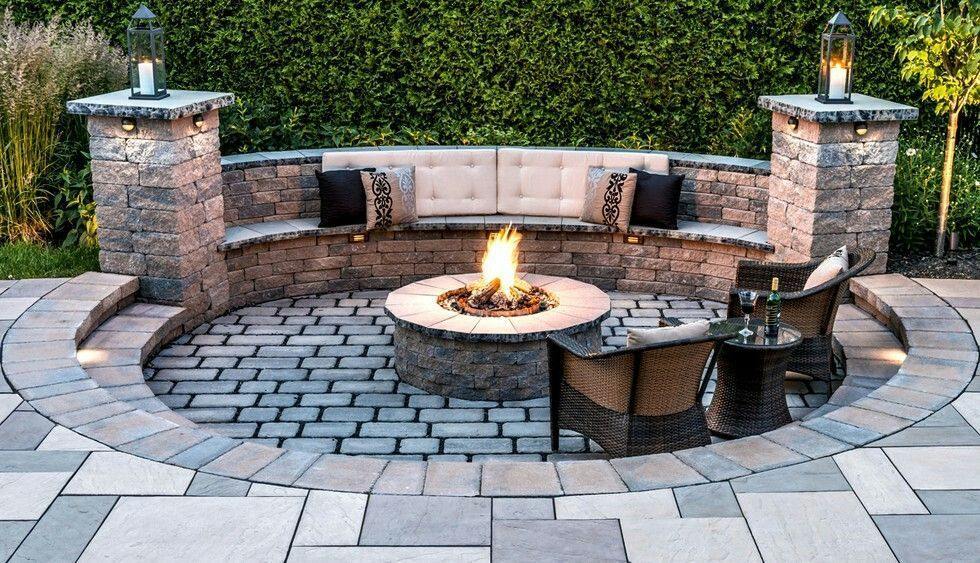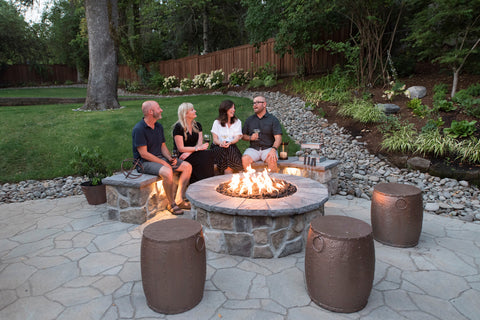
Fall Outdoor Entertaining Essentials 2025: The Craftsmanship-First Buying Guide
Fall Outdoor Entertaining Essentials 2025: The Craftsmanship-First Buying Guide
Fall entertaining should feel like a tailored experience—warm, welcoming, and built to last. Think of your backyard setup the way you might evaluate a luxury suit: it starts with quality materials, depends on thoughtful design (a great “fit”), and shines with craftsmanship you can see and feel. In this guide, we focus on the essential categories for 2025—heat (patio heaters and fire pits), lighting for shorter days, weather protection, and outdoor cooking—so you can confidently host through chilly evenings with practical, real-world buying advice. Throughout, we emphasize build quality and value at different budget levels, plus safety tips and planning insights drawn from the Mancave Backyard knowledge base.
Key takeaways / Summary
- What to buy first: Prioritize heat (patio heater or fire pit), then lighting and weather protection. Add cooking upgrades (like pizza accessories) once core comfort is sorted.
- Materials that matter: For longevity and a premium feel, look for stainless steel (often 304 for outdoor), powder-coated steel/aluminum, ceramic or tempered glass where appropriate, and UV-stabilized fabrics for covers.
- Features to look for in heaters: Stable base with tip-over protection, solid welds/fasteners, thoughtful fuel access, reliable ignition, and clear clearance specs that are easy to read and follow.
- Features to look for in fire pits: Efficient airflow/smokeless design, spark protection, durable grates/ash management, compatibility with cooking accessories, and safe radiant heat distances.
- Lighting essentials: Warm-white LEDs (2700–3000K) for mood, high IP ratings for weather exposure, layered zones (path, task, overhead), and dimming for control.
- Weatherproofing must-haves: Well-fitted covers, UV and water resistance, breathable construction to avoid trapped moisture, and proper fall storage practices for fuel and textiles.
- Safety first: Respect clearances near structures, manage sparks/embers, anchor or weight tall heaters, and create kid-safe zones around any live flame. See Keeping Kids Safe Around the Fire Pit.
- Top brands often compared by hosts: Solo Stove and Breeo for smokeless-style fire pits—see the comparison at Solo Stove vs Breeo.
- Budget guidance: Entry lines typically use basic steel and simpler finishes; mid-tier balances thicker-gauge metals and improved airflow; premium tiers lean into heavier stainless, refined castings, and modular accessories—think the outdoor equivalent of Italian tailoring in fit and finish.
With those principles in mind, start where comfort begins: dependable, well-placed heat.
Start with heat: patio heaters vs. fire pits (how to choose)
Cold snaps don’t have to end the party. Your first fork-in-the-road decision is a patio heater (clean, directional warmth) or a fire pit (high ambiance, social focal point, and potentially smokeless designs). Both are valid—your choice depends on layout, local rules, and what you value more: straightforward heat or multi-sensory atmosphere.
Quick decision framework:
- Choose a patio heater if you host frequently, need instant heat, have neighbors sensitive to smoke, or want warmth under a covered but ventilated area.
- Choose a fire pit if you want a conversation centerpiece, enjoy the ritual of tending a flame, or plan to cook over live fire.
- Blend both for larger groups: a fire pit as the focal point, with a heater offset to warm the fringe seating.
If you want the classic campfire effect, a fire pit delivers the glow and conversation spark you can’t get from a heater. For help deciding between fuel types, start with Mancave Backyard’s Which Are Better Overall: Wood or Gas Fire Pits and the detailed Guide to Fuel Selection for a Wood-Burning Fire Pit. If you’re eyeing a low-smoke experience with modern airflow engineering, read Benefits of a Smokeless Fire Pit and the brand comparison Solo Stove vs Breeo.
Fire pits: craftsmanship, airflow, and safety
Fire pits vary widely in build and performance. For the longest service life, look at fit and finish the way you would inspect a luxury suit’s stitching: consistent seam work, smooth edges, and thought-out airflow pathways. High-quality pits often use thicker steel, stainless components, and well-designed venting for a more complete burn (less smoke) and easier ash management. Double-wall, airflow-enhanced designs promote secondary combustion—translating to hotter fires and reduced smoke. Materials like 304 stainless resist corrosion; weathering steel (often called “Corten”) intentionally patinas to a rugged, protective finish.
Practical details matter: removable ash pans simplify cleanup; spark screens and snugly fitting lids control embers; and cooking rings, grates, or adjustable-height accessories extend the pit’s utility. If installing over decks or lawns, use a manufacturer-approved stand or fire-resistant base and confirm surface heat tolerance before the first burn. For permanent builds, Mancave Backyard’s How To Build The Best Fire Pit For Your Space walks through layout and materials planning.
Fuel choices for fall: wood vs. gas (and how to store it)
Wood brings scent and sound; gas offers speed and control. If you’re going wood, properly seasoned hardwoods (generally 15–20% moisture) burn hotter and cleaner. Split to fit your fire pit’s recommended log length, and avoid resinous or treated woods. Mancave Backyard’s fuel selection guide covers the details, and How To Store Your Firewood helps you keep stacks dry and safe as temperatures drop.
If you prefer “on-demand” warmth, gas is predictable with minimal cleanup. Plan propane tank placement or natural gas routing with clearances and local codes in mind. Use manufacturer-rated hoses and regulators, and perform a quick soapy-water leak test after connections. If you’re in a dense neighborhood or hosting frequently, smokeless-style pits (see Benefits of a Smokeless Fire Pit) strike a balance—real flame presence with dramatically reduced smoke.
Patio heaters: clean heat, tailored placement
Freestanding propane heaters are the “sport coat” of fall entertaining: versatile, easy to pair with existing layouts, and flattering in almost any setting. The premium feel comes from stability and finish—look for a substantial weighted base, secure tank access, and hardware that won’t seize after a single season outdoors. Powder-coated finishes fight corrosion, while stainless components improve longevity. For covered patios, double-check manufacturer clearance guidelines and ventilation requirements.
- Stability Tip-over shutoff, wide bases, and secure wheels if mobile. Add weights or anchors in windy areas.
- Output Typical propane units run 38,000–48,000 BTU. In calm conditions, expect a comfortable radius of roughly 4–6 feet; plan placement around where people actually sit.
- Ignition Simple, reliable starts—especially valuable on brisk nights. Protect igniters and burners from debris with periodic cleaning.
- Form factor “Mushroom” tops throw wide, overhead heat; glass-tube towers showcase flame but are more directional; electric infrared panels give instant, wind-resistant radiant warmth (check amperage and outdoor ratings).
- Finish Premium powder coats and stainless resist chips and rust for a “like-new” look into next season.
Lighting for shorter days: layer and warm it up
As evenings start earlier, lighting should support both safety and mood. Aim for 2700–3000K LEDs for a cozy tone that complements amber flames, and layer three types of light:
- Path lighting: Guides guests safely and frames your entertaining zone. Low-voltage (12V) options are durable and easy to expand.
- Task lighting: Focused illumination for grill, prep, and bar areas—minimize glare by aiming light just where you need it.
- Overhead/ambient: String or canopy lights soften the space; consider dimmers or smart plugs for control as the night settles in.
Match weather ratings to exposure (higher IP ratings for open areas; mid-range ratings under pergolas). Use warm-white LEDs with good color rendering (CRI ~80+) and segment lighting zones so you can bring the ambiance down after dinner while keeping prep areas bright.
Weather protection: covers, storage, and surfaces
A well-fitted cover is the equivalent of a garment bag for your outdoor investments—it keeps finishes clean, prevents UV fade, and reduces moisture wear. Prioritize UV resistance, a tough exterior fabric, and breathability so moisture doesn’t linger under the cover. For fabrics and cushions, store out of direct exposure when storms move in; rotate and fully dry before covering to avoid mildew. Before winter, clean and dry surfaces, empty ash pans, and lightly oil bare steel per manufacturer guidance.
Cooking upgrades: pizza nights, grills, and accessories
When the temperature drops, hot, shareable food becomes the heart of the evening. If your group loves interactive cooking, a pizza-night setup is both practical and memorable. Preheat stones thoroughly, use a wooden peel for launching and a metal peel for turning, and keep an instant-read thermometer handy to adjust for cooler ambient temperatures. Before you invest, review the basics in How to Buy BBQ Accessories | BBQ Accessories Buying Guide—it covers accessory selection that improves results (peels, stones, thermometers) and how to select complementary gear to your heat source.
Layout and seating: plan for warmth, conversation, and flow
Arrange seating with the heat source as a focal point and wind direction in mind. Leave clear walkways to the kitchen/grill and bathrooms, and avoid funneling traffic behind chairs near a fire or heater. For textiles, think “quality materials” the way a sartorial expert would: tightly woven, UV-stabilized, and quick-drying. If you’re adding a rug, choose outdoor-rated fabric that resists moisture and won’t trap embers.
- Zoning Define a lounge zone, a dining zone, and a prep zone—each with appropriate light and heat access. A U- or semicircle around the fire encourages conversation.
- Clearances Observe manufacturer distances around heaters and fire pits, especially under pergolas or near overhangs. Keep walkways clear for easy egress.
- Materials Opt for powder-coated frames and slatted tabletops that shed water and dry quickly after dew or drizzle. Add side tables to keep drinks away from heat edges.
Smokeless-style fire pits: low smoke, high ambiance
If you love that fireside glow but want to minimize smoke drift and clothing odor, airflow-enhanced designs are worth a look. They tend to bring that “Italian craftsmanship” attention to detail—precise vents, refined edges, and durable finishes. Feed these pits with smaller, well-seasoned splits and keep flames below the rim to maximize secondary burn. For a deeper dive into category differences and brand design philosophies, compare options in Solo Stove vs Breeo and explore use-case benefits in Benefits of a Smokeless Fire Pit.
Safety, compliance, and local considerations
Check local codes and HOA rules for open flame, fuel storage, and clearance requirements. Keep a fire extinguisher and a lidded metal ash bin at the ready, and never leave a live fire unattended. For gas setups, secure propane tanks upright outdoors, check fittings with a soapy-water test, and follow labeled clearances. Use outdoor-rated, GFCI-protected circuits for electric heaters or lighting. If children or pets are part of the evening, establish buffer zones, use screens, and educate guests. For a quick refresher, review Keeping Kids Safe Around the Fire Pit.
Bugs and comfort in early fall
Start with yard maintenance (trim, drain standing water) and add subtle deterrents around seating. Gentle airflow from a quiet fan disrupts mosquitoes without added scent; choose warm-colored bulbs to avoid attracting insects. For a step-by-step overview, read Keeping Bugs Away From Your Backyard Mancave. The goal is simply to create a bubble of comfort around your conversation areas, so your investment in heaters and lighting pays off.
A craftsmanship-first checklist (by category)
- Fire pits: Thicker-gauge steel, stainless inserts, quality welds, spark screens, and efficient airflow; look for accessories that align with how you’ll host (grates, stands, cooking rings).
- Patio heaters: Stable weighted bases, robust ignition, smooth enclosures for tank access, corrosion-resistant finishes, and clear labeling for clearances.
- Lighting: Weather ratings, warm-white LEDs, durable cable/connectors, and options to dim or segment zones for mood control.
- Covers: UV resistance, breathable construction, reinforced stitching, and straps for windy conditions.
- Cooking: Accessories that match your main heat source; ergonomic tools and thermometers to nail doneness in cooler ambient temperatures.
Planning your fall hosting calendar (2–4 week ramp)
2–4 weeks out: Decide on heat source(s) and confirm placement. Sketch zones and plan cable/hose routes so nothing crosses walkways. Check local rules and order covers or accessories with time to test.
10–14 days out: Add lighting and covers. Test night lighting; make sure the grill and prep areas are fully visible without overpowering the lounge zone. Verify heater/fire pit clearances in final positions.
1 week out: Stock fuel (wood or propane) and test gear. Run heaters for a few minutes, ignite your fire pit, and confirm ignition reliability. Prep the bug plan if needed.
2–3 days out: Stage furniture, wash textiles, and set out wood or fuel safely. Do a final safety check of clearances and extinguishers.
Day-of: Preheat heaters 10–15 minutes before guests arrive; light wood pits 30–40 minutes early to build a clean-burning coal bed. Set out throws/blankets and dim ambient lights after dinner.
Helpful deep dives from Mancave Backyard
Your fall entertaining, tailored
Great fall hosting is less about buying everything and more about investing in the right pieces—those with craftsmanship you can see and durability you can trust. Start with heat, add warm layered lighting, protect your gear with proper covers, and plan food that makes sense in cooler air. Whether you choose the “sport coat” versatility of a patio heater or the “black-tie” ambiance of a refined fire pit, aim for the outdoor equivalent of Italian craftsmanship: clean lines, quality materials, and a fit that suits your space.
For more practical how-tos, explore Mancave Backyard’s News and Tips sections, including deep dives on wood fuel selection, firewood storage, and smokeless fire pit benefits. Host well—and stay warm out there.







